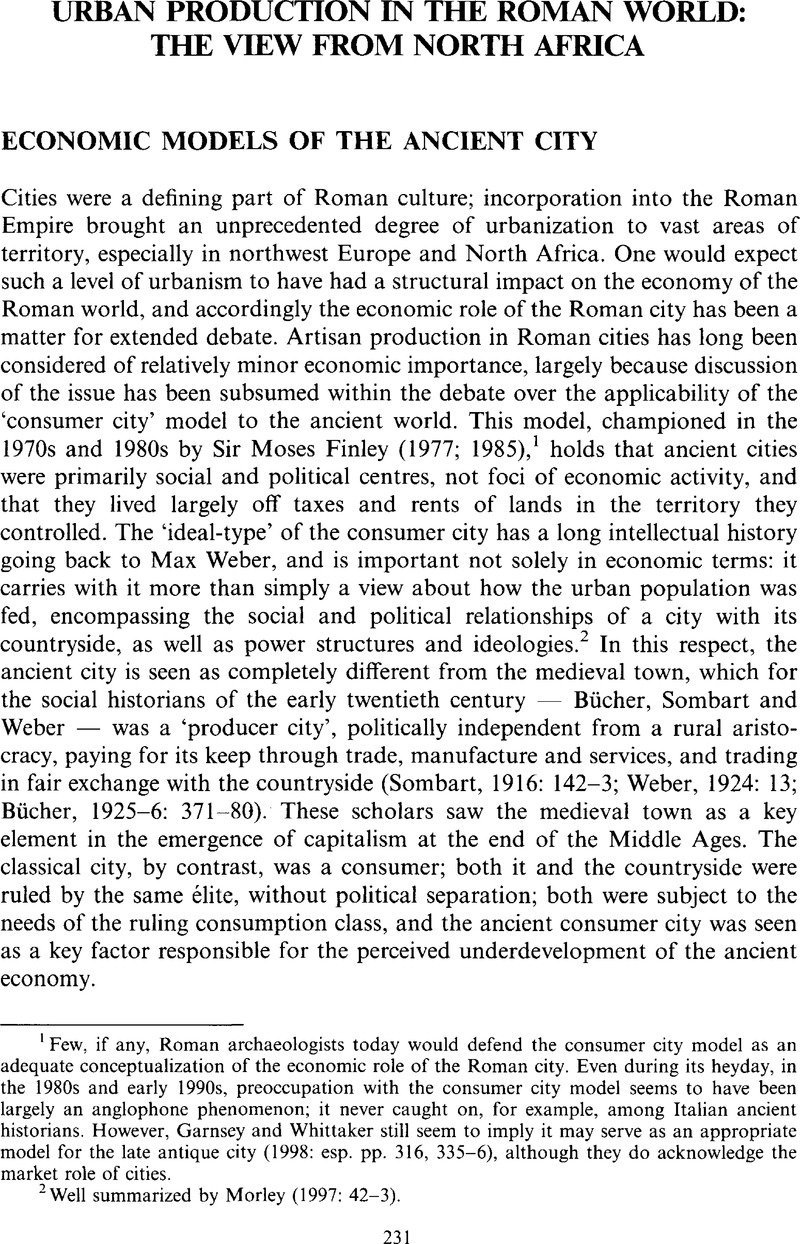Crossref Citations
This article has been cited by the following publications. This list is generated based on data provided by Crossref.
Magalhães de Oliveira, Julio
2012.
O conceito de Antiguidade Tardia e as transformações da cidade antiga.
Revista de Estudos Filosóficos e Históricos da Antiguidade,
Vol. 12,
Issue. 24,
Hoyer, Daniel
2013.
Public feasting, elite competition, and the market economy of Roman North Africa.
The Journal of North African Studies,
Vol. 18,
Issue. 4,
p.
574.
Oliveira, Julio Cesar Magalhães de
2013.
O "clamor do pobre" e o "poder do povo": pobreza, cidadania e ação coletiva nas cidades da África Romana Tardia.
Varia Historia,
Vol. 29,
Issue. 50,
p.
383.
Machebœuf, Christine
Ferri, Narcisa Bolšec
Hanry, Alexandra
and
Katunarić, Tea
2013.
La pourpre en Istrie.
Mélanges de l'École française de Rome. Antiquité,
Marí i Sala, Lluís
and
Revilla Calvo, Víctor
2018.
Cultura material y cultura escrita en la sociedad rural de Hispania en los siglos I-II d. C.: el conjunto cerámico y los grafitos del asentamiento de Cal Montblanc (Albesa, Lleida).
Archivo Español de Arqueología,
Vol. 91,
Issue. ,
p.
217.
Trakadas, Athena
2018.
Methods of Enquiry: Reconstructing Ancient Marine Resource Exploitation in the Western Maghreb.
Journal of Maritime Archaeology,
Vol. 13,
Issue. 3,
p.
353.
Bessard, Fanny
2018.
The Politics of Sūqs in Early Islam.
Journal of the Economic and Social History of the Orient,
Vol. 61,
Issue. 4,
p.
491.
Ben Tahar, Sami
2019.
Le site antique de Guellala (Jerba) de la prospection à l’étude archéologique.
Antiquités africaines,
Vol. 55,
Issue. ,
p.
71.
Keddie, Anthony
2019.
Class and Power in Roman Palestine.
Evans, J. Marilyn
2020.
Encyclopedia of Global Archaeology.
p.
7824.
Amraoui, Touatia
2020.
Mobile Technologies in the Ancient Sahara and Beyond.
p.
115.
Wilson, Andrew I.
2020.
Urbanisation and State Formation in the Ancient Sahara and Beyond.
p.
396.
Boozer, Anna Lucille
2020.
Urbanisation and State Formation in the Ancient Sahara and Beyond.
p.
147.
Chirikure, Shadreck
2020.
Shades of Urbanism(s) and Urbanity in Pre-Colonial Africa: Towards Afro-Centred Interventions.
Journal of Urban Archaeology,
Vol. 1,
Issue. ,
p.
49.
Duckworth, C. N.
Cuénod, A.
and
Mattingly, D. J.
2020.
Mobile Technologies in the Ancient Sahara and Beyond.
Campmany Jiménez, Joan
Romanowska, Iza
Raja, Rubina
Seland, Eivind H.
and
Biehl, Peter F.
2022.
Food security in Roman Palmyra (Syria) in light of paleoclimatological evidence and its historical implications.
PLOS ONE,
Vol. 17,
Issue. 9,
p.
e0273241.
Van Limbergen, Dimitri
Hoffelinck, Adeline
and
Taelman, Devi
2022.
Reframing the Roman Economy.
p.
1.
Tran, Nicolas
2022.
Rome, archéologie et histoire urbaine : trente ans après l’Urbs (1987).
p.
377.
Dodd, Emlyn
and
Van Limbergen, Dimitri
2024.
The ‘Place’ of Urban Wineries and Oileries in the Greek and Roman World.
Journal of Urban Archaeology,
Vol. 9,
Issue. ,
p.
81.
Miller, Shulamit
Gekht, Yuli
Rebecca Martin, S.
Matskevich, Sveta
and
Sharon (ז”ל), Ilan
2024.
The Houses of Hellenistic–Roman Tel Dor: A Study of Domestic Social Practices and Economic Activities.
Journal of Eastern Mediterranean Archaeology and Heritage Studies,
Vol. 12,
Issue. 2,
p.
115.



